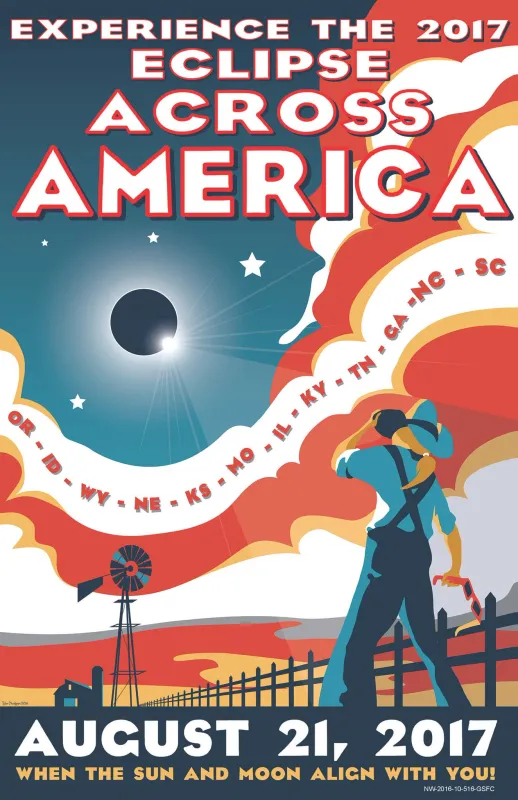On Monday, August 21, 2017 a total solar eclipse will take place over parts of North America. An eclipse happens when the moon aligns between the Earth and Sun and produces a shadow obstructing the sun. Observers from the 14 states along the path of totality will experience a total solar eclipse, where the moon completely covers the sun. Observers outside of this path will still be able to see a partial solar eclipse.
For those planning to watch the phenomena, it is important to do so safely. Looking directly at the sun is extremely dangerous except for during the brief period of totality which will only occur along the narrow path reaching 14 states. Ordinary sunglasses or homemade filters are not able to sufficiently protect your eyes. Special eclipse glasses that are compliant with the American Astronomical Society and the ISO 12312-2 international safety standard are thousands of times darker than standard sunglasses and allow you to look at the uneclipsed or partially eclipsed sun as long as you like. FEMA recommends using the AAS vendors to avoid purchasing counterfeit glasses.
With the last total eclipse occurring in 1979, viewing events that may cause large crowds and heavy traffic in some areas of the U.S. are anticipated. If you are going to be travelling to see the eclipse, FEMA has a few suggestions:
- Check the forecast in advance and prep your vehicle with emergency supplies like jumper cables, a car cell phone charger, food and water.
- Download the FEMA app to keep you updated on the latest weather alerts.
- Set a meeting place with friends & family at your viewing destination in case you get separated.
For boaters who plan on watching from the water, CBP advises filing float plans on the USCG smartphone app to make it easier for USCG and law enforcement to respond to maritime emergencies.
For more information on the total solar eclipse, safety and how to prepare, please visit https://eclipse2017.nasa.gov/.

[poster:@NASA]
